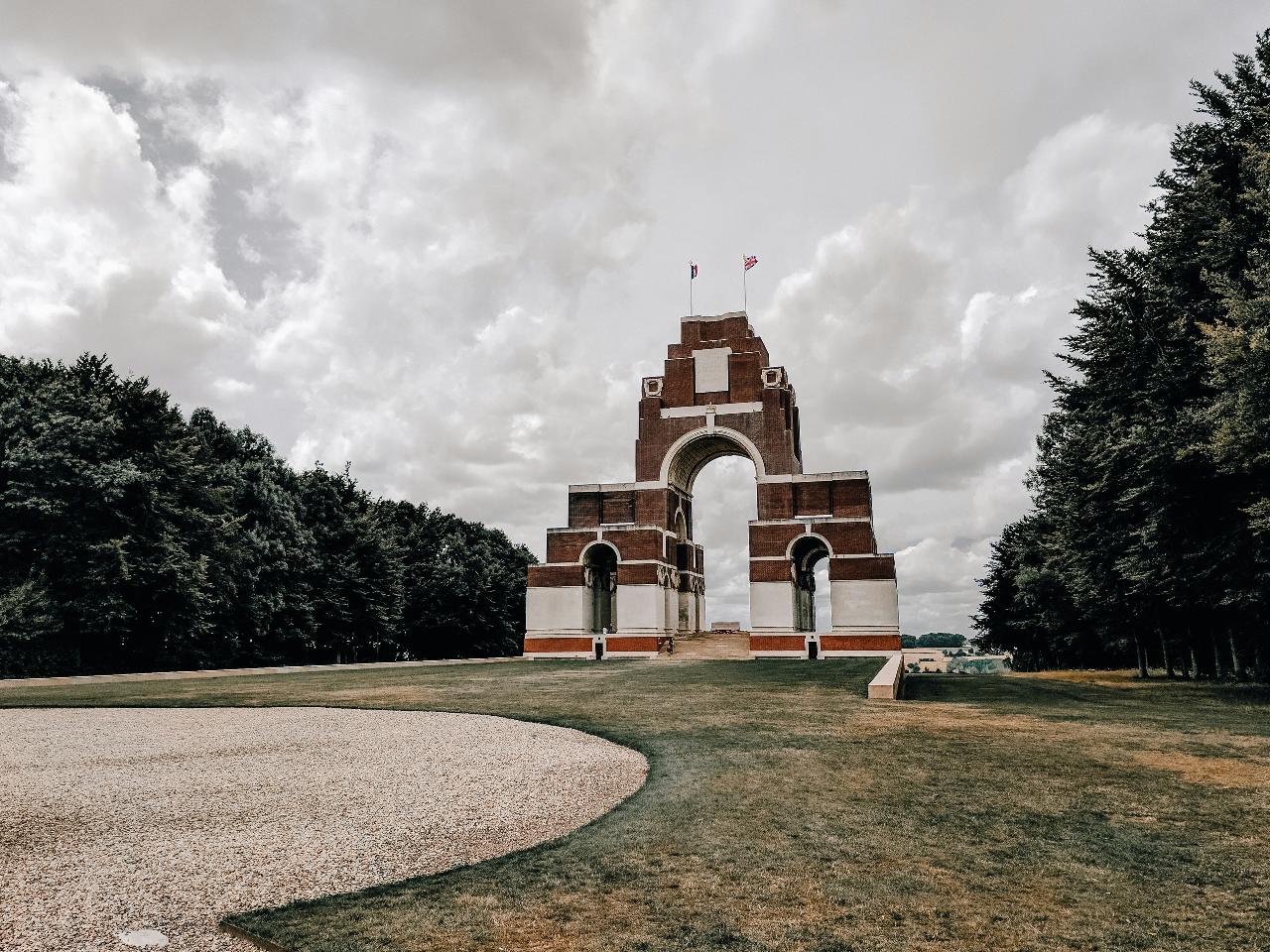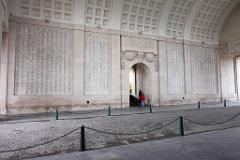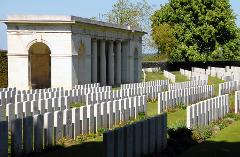Somme Battlefields from Arras: Private Tour of Key WWI Sites

- Durée: 9 Heures (environ)
Discover the Historic WWI Battlefields
Embark on a deeply historical journey from Arras to Somme Battlefields. This private tour is designed to cover significant sites, including Beaumont Hamel, Lochnagar Crater, Albert, Thiepval, Pozières and Villers Bretonneux. You will be guided by an expert who can tailor the day to your interests, ensuring an informative and moving experience.
Expert English-Speaking Guide: WWI Specialist
Meet your knowledgeable English-speaking guide, expert of WWI, who will provide you with a comprehensive overview of the itinerary and program. Get ready to embark on a journey that delves deep into history. Board our premium air-conditioned vehicle, specially designed for your comfort during the trip.
Arrive at Beaumont-Hamel
Beaumont-Hamel is a site of major historical significance due to its association with the Battle of the Somme during World War I. There took place one of the largest battles of World War I between July 1 and November 18, 1916. The first day of the battle is infamous for being one of the bloodiest days in the history of the British Army. The Newfoundland Regiment participated in an assault near the village of Beaumont-Hamel. The regiment suffered devastating losses, with the majority of the soldiers either killed or wounded within the first half-hour of the attack. Today, the site is preserved as a memorial park dedicated to the memory of all Newfoundlanders who fought and died during World War I. The park encompasses preserved trenches, memorials, and the Beaumont-Hamel Newfoundland Memorial, which includes the iconic caribou statue overlooking the battlefield.
Visit Thiepval Memorial
Thiepval was a significant location during the Battle of the Somme, one of the largest battles on the Western Front during World War I. Thiepval became synonymous with the enormous loss of life and the immense physical and emotional toll of the First World War. The Battle of the Somme, which began on July 1, 1916, and lasted until November of the same year, saw unprecedented levels of casualties on both sides, with Thiepval being one of the focal points of this devastating conflict.
The Thiepval Memorial to the Missing of the Somme is a war memorial dedicated to the 72,337 missing British and South African men who died in the Battles of the Somme of the First World War between 1915 and 1918 with no known grave. It is one of the largest war memorials in the world. The memorial, designed by Sir Edwin Lutyens, is a massive brick and stone structure that stands 45 meters (about 148 feet) high, dominating the landscape. It is built over the remains of a German fortified position that was captured by British forces during the battle.
Lochnagar Crater
Then, reach Lochnagar Crater that is one of the most poignant memorials of the First World War on the Western Front. The crater was created at the outset of the Battle of the Somme on July 1, 1916. It was the result of a massive explosion when British forces detonated a mine containing 60,000 pounds (around 27 tons) of explosives beneath the German defensive positions. The explosion created a crater that is 30 meters deep and 100 meters across, making it one of the largest man-made craters still visible from World War I. The aim was to destroy German fortifications and break through their lines. Although the explosion successfully created the crater, the overall offensive resulted in significant casualties without achieving its strategic objectives.
Discover the Village of Pozières
Pozieres was a central battlefield during the Battle of the Somme in 1916. The Battle of Pozieres represented a crucial phase of the Battle of the Somme. The village and its surroundings, including a strategically important ridge, were the scenes of intense and bloody fighting between Allied (primarily British and Australian) forces and the German Army. The area was heavily fortified by the Germans, who had built deep defenses and machine-gun posts, making the advance incredibly difficult and costly. The Australian Imperial Force played a significant role in the battle for Pozieres. Over several weeks of fierce combat, Australian troops managed to capture the village and part of the ridge but suffered heavy casualties. The Australian 1st, 2nd, and 4th Divisions were particularly involved in this effort.
Lunch Break (at own expense)
Indulge in a delightful lunch at a local restaurant in the surroundings of Pozières or Albert.
Visit the Albert Underground Museum
The Albert Underground Museum is focused on the Battle of the Somme and the broader experiences of soldiers and civilians during World War I. The museum provides insights into the trench warfare that characterized the conflict, the technological advancements and challenges, and the daily lives of those on the front lines. Exhibits include original artifacts from the war, such as weapons, uniforms, personal items of soldiers, and trench reconstructions.
Villers-Bretonneux
Conclude the day by the visit of Villers-Bretonneux that is most notable for the role it played during the German Spring Offensive in 1918 and the subsequent Allied counter-offensives. The town was the site of a critical battle involving Australian forces, who were instrumental in recapturing it from German control. The battle took place on April 24-25, 1918, and is particularly remembered for the successful counter-attack led by Australian and British troops during the night, which marked a turning point in halting the German advance towards Amiens. The battle is notable for being one of the first instances of tank vs. tank combat in history.
Return to Arras
After the visit of Viller-Bretonneux, we commence our journey back to Arras, marking the end of our services. Cherish the memories and newfound knowledge acquired during this poignant and educational tour.








